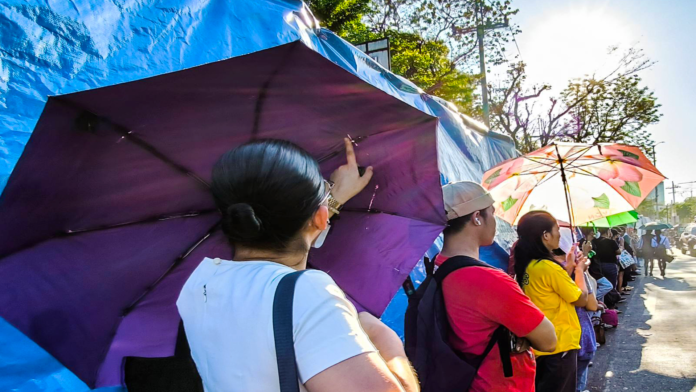The city government of Manila will formulate a heat index action plan matrix that will serve as a guide for its response efforts to scorching temperatures as the El Niño phenomenon persists.
Mayor Honey Lacuna said Thursday she has directed the city’s health office, social welfare services, and disaster risk reduction and management office to draft the plan.
“Manila’s adapted heat index system should indicate when residents shall be required to stay indoors when outdoor activities at school and work shall be suspended, when face-to-face classes and onsite work shall be suspended, and when businesses that use a lot of water should reduce water use or limit their operations at night or temporarily stop operations for the greater good,” she said in a statement.
Lacuna also asked the Bureau of Fire Protection to provide inputs on improved fire response efforts, amid an uptick in big fire incidents in the city in recent weeks.
On Wednesday, at least three people were hurt while 500 families lost their homes in a fire that razed a residential area in Purok 3, Isla Puting Bato in Tondo District.
The city must have its own heat index system, Lacuna said, noting that the one being used by the Philippine Atmospheric, Geophysical and Astronomical Administration (PAGASA) is “incomplete.”
“The PAGASA heat index system has alert levels or different temperature levels. Manila should have specific local measures at each alert level,” she said.
Lacuna, a medical doctor, also cited the need to brace for dry season-related illnesses, such as skin rashes, prickly heat, dehydration, dengue, heat exhaustion, food poisoning, and heat stroke.
“Manila’s hospitals and health centers should be ready for heart attacks, strokes, and disease outbreaks from water contamination because many thirsty people have higher water demand. There should be first aid training at the barangay level because first aid must be done first before patients are rushed to hospitals,” she said.
She added that local responders and health centers should be on high alert in responding to medical emergencies and assist the vulnerable population, particularly the elderly, pregnant women, those with co-morbidities, and persons with disabilities. (PNA)


